Saideep Tiku
SANGRIA: Stacked Autoencoder Neural Networks with Gradient Boosting for Indoor Localization
Mar 03, 2024Abstract:Indoor localization is a critical task in many embedded applications, such as asset tracking, emergency response, and realtime navigation. In this article, we propose a novel fingerprintingbased framework for indoor localization called SANGRIA that uses stacked autoencoder neural networks with gradient boosted trees. Our approach is designed to overcome the device heterogeneity challenge that can create uncertainty in wireless signal measurements across embedded devices used for localization. We compare SANGRIA to several state-of-the-art frameworks and demonstrate 42.96% lower average localization error across diverse indoor locales and heterogeneous devices.
STELLAR: Siamese Multi-Headed Attention Neural Networks for Overcoming Temporal Variations and Device Heterogeneity with Indoor Localization
Dec 16, 2023Abstract:Smartphone-based indoor localization has emerged as a cost-effective and accurate solution to localize mobile and IoT devices indoors. However, the challenges of device heterogeneity and temporal variations have hindered its widespread adoption and accuracy. Towards jointly addressing these challenges comprehensively, we propose STELLAR, a novel framework implementing a contrastive learning approach that leverages a Siamese multi-headed attention neural network. STELLAR is the first solution that simultaneously tackles device heterogeneity and temporal variations in indoor localization, without the need for retraining the model (re-calibration-free). Our evaluations across diverse indoor environments show 8-75% improvements in accuracy compared to state-of-the-art techniques, to effectively address the device heterogeneity challenge. Moreover, STELLAR outperforms existing methods by 18-165% over 2 years of temporal variations, showcasing its robustness and adaptability.
VITAL: Vision Transformer Neural Networks for Accurate Smartphone Heterogeneity Resilient Indoor Localization
Feb 18, 2023Abstract:Wi-Fi fingerprinting-based indoor localization is an emerging embedded application domain that leverages existing Wi-Fi access points (APs) in buildings to localize users with smartphones. Unfortunately, the heterogeneity of wireless transceivers across diverse smartphones carried by users has been shown to reduce the accuracy and reliability of localization algorithms. In this paper, we propose a novel framework based on vision transformer neural networks called VITAL that addresses this important challenge. Experiments indicate that VITAL can reduce the uncertainty created by smartphone heterogeneity while improving localization accuracy from 41% to 68% over the best-known prior works. We also demonstrate the generalizability of our approach and propose a data augmentation technique that can be integrated into most deep learning-based localization frameworks to improve accuracy.
Multi-Head Attention Neural Network for Smartphone Invariant Indoor Localization
May 17, 2022
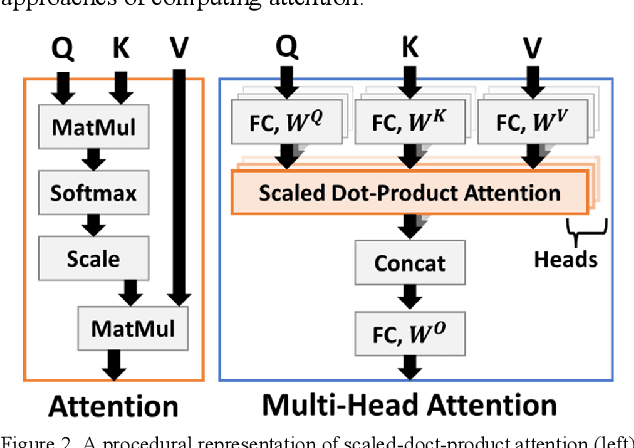
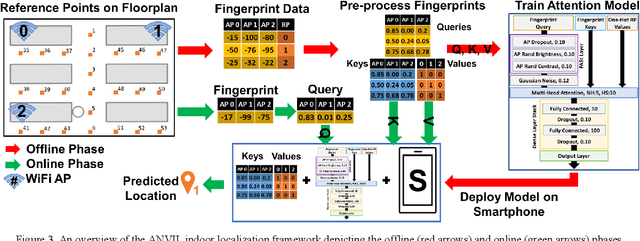
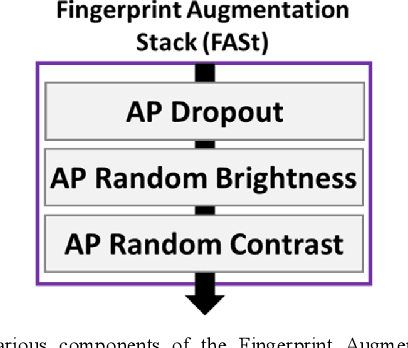
Abstract:Smartphones together with RSSI fingerprinting serve as an efficient approach for delivering a low-cost and high-accuracy indoor localization solution. However, a few critical challenges have prevented the wide-spread proliferation of this technology in the public domain. One such critical challenge is device heterogeneity, i.e., the variation in the RSSI signal characteristics captured across different smartphone devices. In the real-world, the smartphones or IoT devices used to capture RSSI fingerprints typically vary across users of an indoor localization service. Conventional indoor localization solutions may not be able to cope with device-induced variations which can degrade their localization accuracy. We propose a multi-head attention neural network-based indoor localization framework that is resilient to device heterogeneity. An in-depth analysis of our proposed framework across a variety of indoor environments demonstrates up to 35% accuracy improvement compared to state-of-the-art indoor localization techniques.
Siamese Neural Encoders for Long-Term Indoor Localization with Mobile Devices
Nov 28, 2021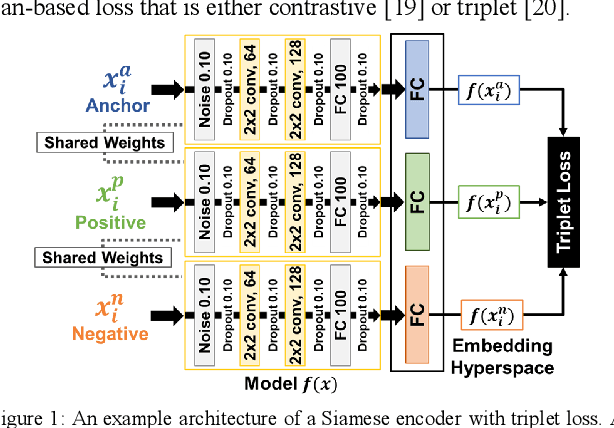

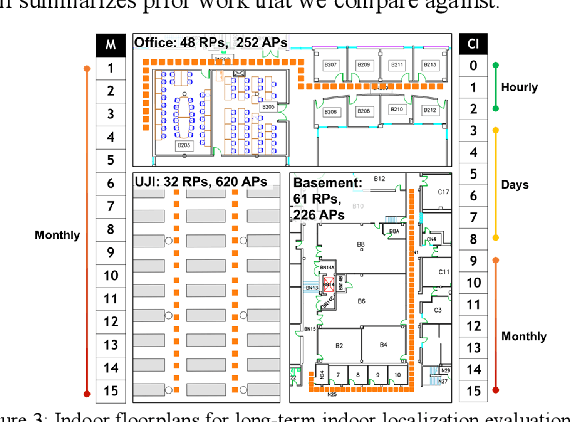
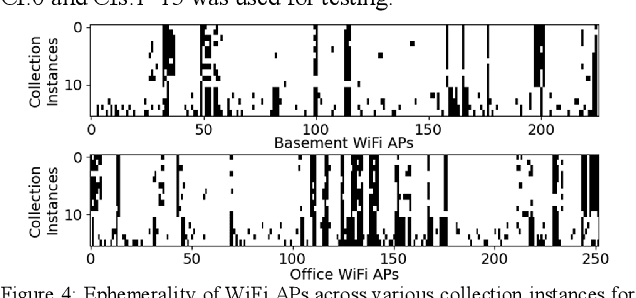
Abstract:Fingerprinting-based indoor localization is an emerging application domain for enhanced positioning and tracking of people and assets within indoor locales. The superior pairing of ubiquitously available WiFi signals with computationally capable smartphones is set to revolutionize the area of indoor localization. However, the observed signal characteristics from independently maintained WiFi access points vary greatly over time. Moreover, some of the WiFi access points visible at the initial deployment phase may be replaced or removed over time. These factors are often ignored in indoor localization frameworks and cause gradual and catastrophic degradation of localization accuracy post-deployment (over weeks and months). To overcome these challenges, we propose a Siamese neural encoder-based framework that offers up to 40% reduction in degradation of localization accuracy over time compared to the state-of-the-art in the area, without requiring any retraining.
CHISEL: Compression-Aware High-Accuracy Embedded Indoor Localization with Deep Learning
Jul 02, 2021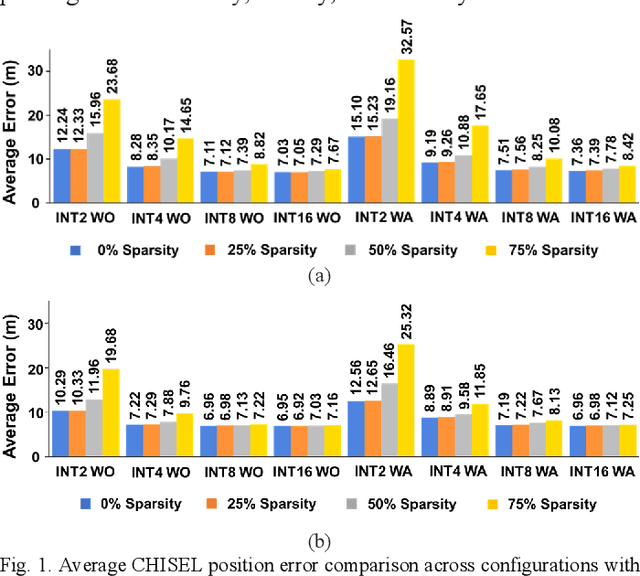
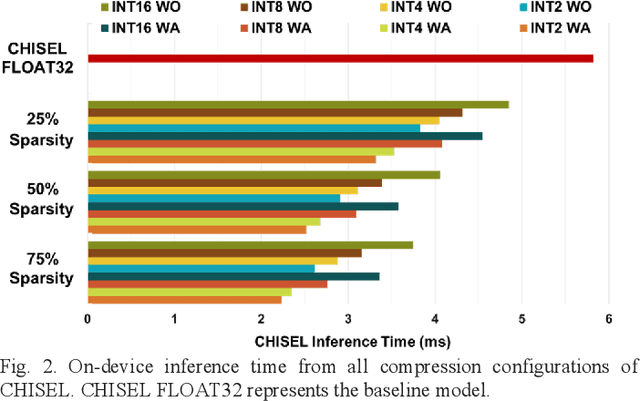
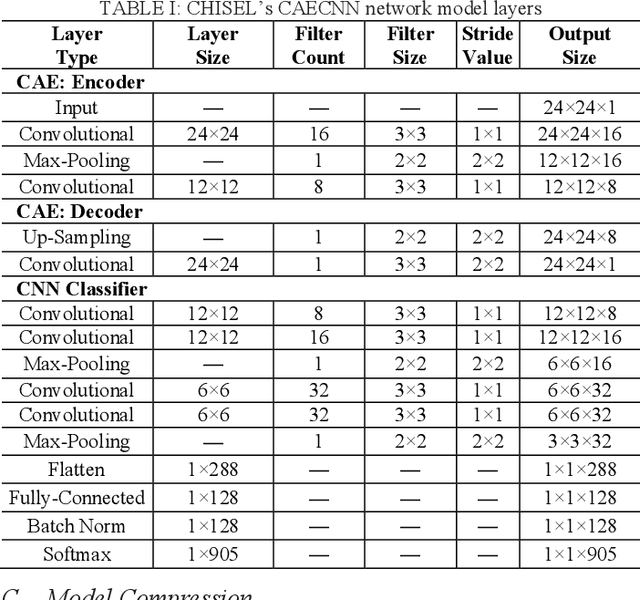

Abstract:GPS technology has revolutionized the way we localize and navigate outdoors. However, the poor reception of GPS signals in buildings makes it unsuitable for indoor localization. WiFi fingerprinting-based indoor localization is one of the most promising ways to meet this demand. Unfortunately, most work in the domain fails to resolve challenges associated with deployability on resource-limited embedded devices. In this work, we propose a compression-aware and high-accuracy deep learning framework called CHISEL that outperforms the best-known works in the area while maintaining localization robustness on embedded devices.
QuickLoc: Adaptive Deep-Learning for Fast Indoor Localization with Mobile Devices
Apr 15, 2021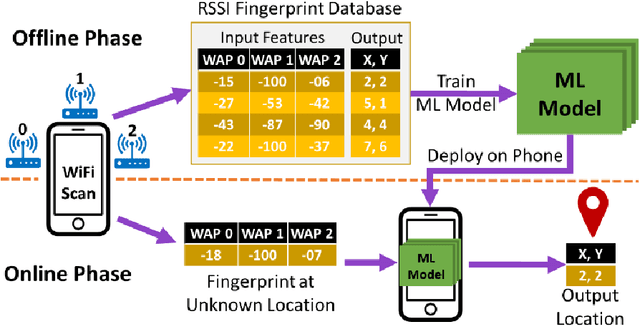

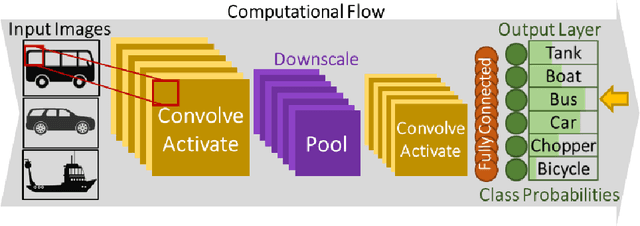
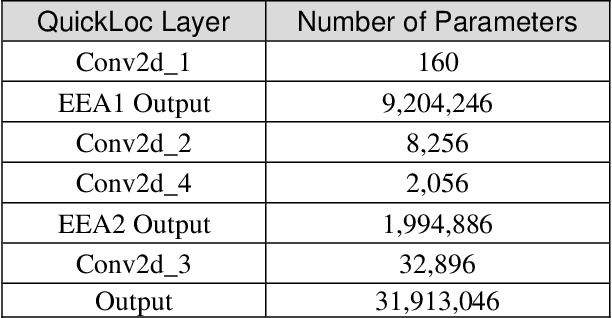
Abstract:Indoor localization services are a crucial aspect for the realization of smart cyber-physical systems within cities of the future. Such services are poised to reinvent the process of navigation and tracking of people and assets in a variety of indoor and subterranean environments. The growing ownership of computationally capable smartphones has laid the foundations of portable fingerprinting-based indoor localization through deep learning. However, as the demand for accurate localization increases, the computational complexity of the associated deep learning models increases as well. We present an approach for reducing the computational requirements of a deep learning-based indoor localization framework while maintaining localization accuracy targets. Our proposed methodology is deployed and validated across multiple smartphones and is shown to deliver up to 42% reduction in prediction latency and 45% reduction in prediction energy as compared to the best-known baseline deep learning-based indoor localization model.
 Add to Chrome
Add to Chrome Add to Firefox
Add to Firefox Add to Edge
Add to Edge